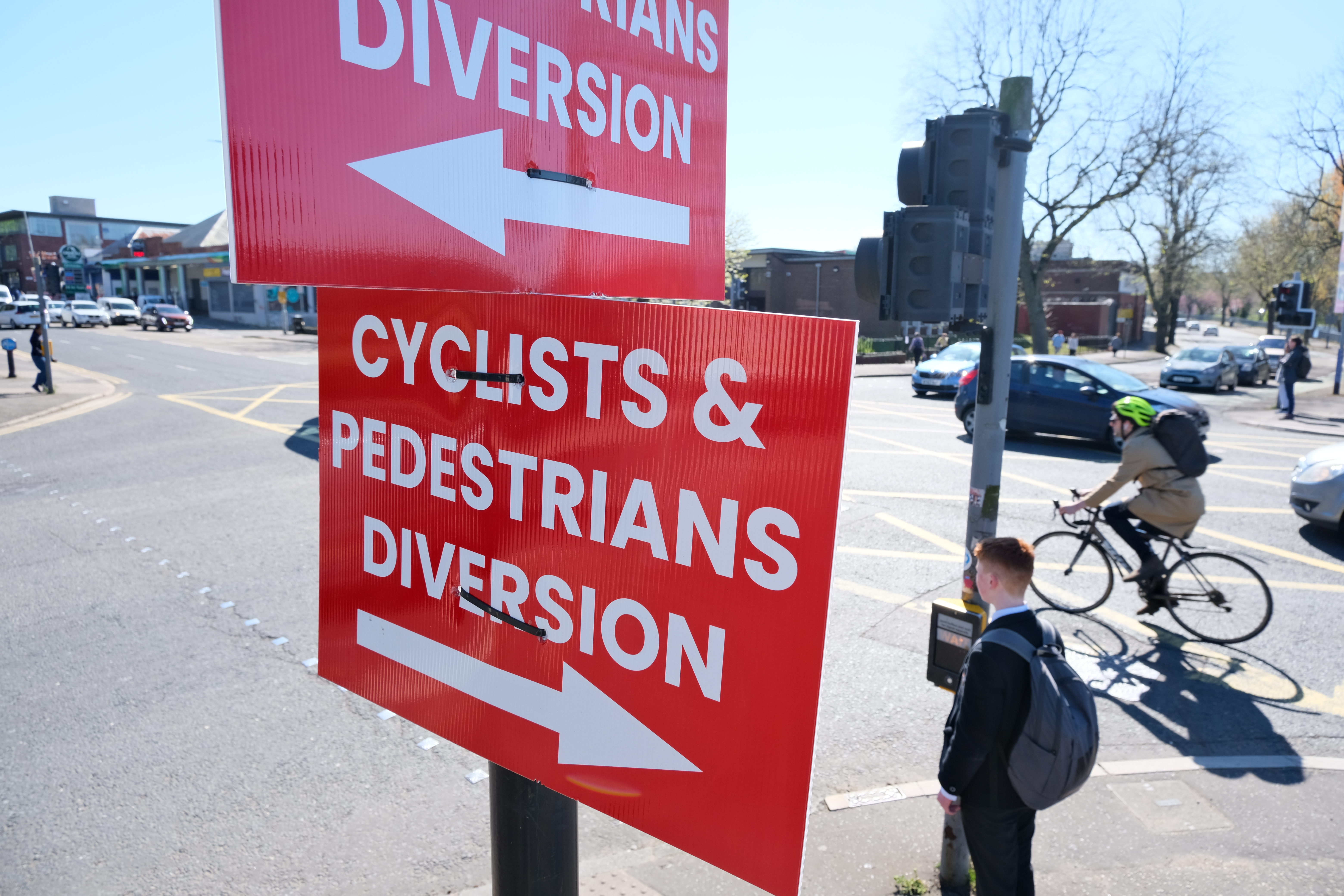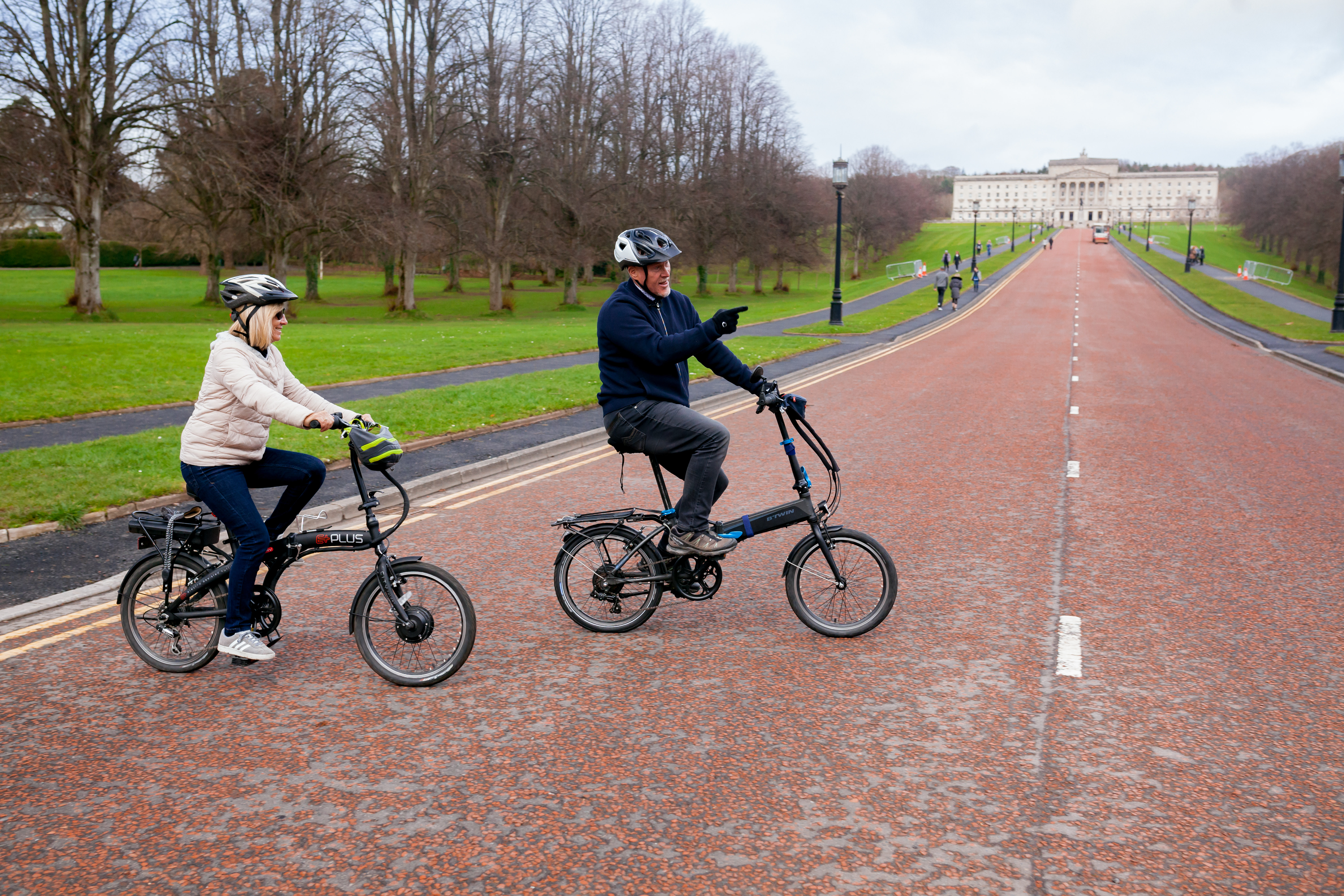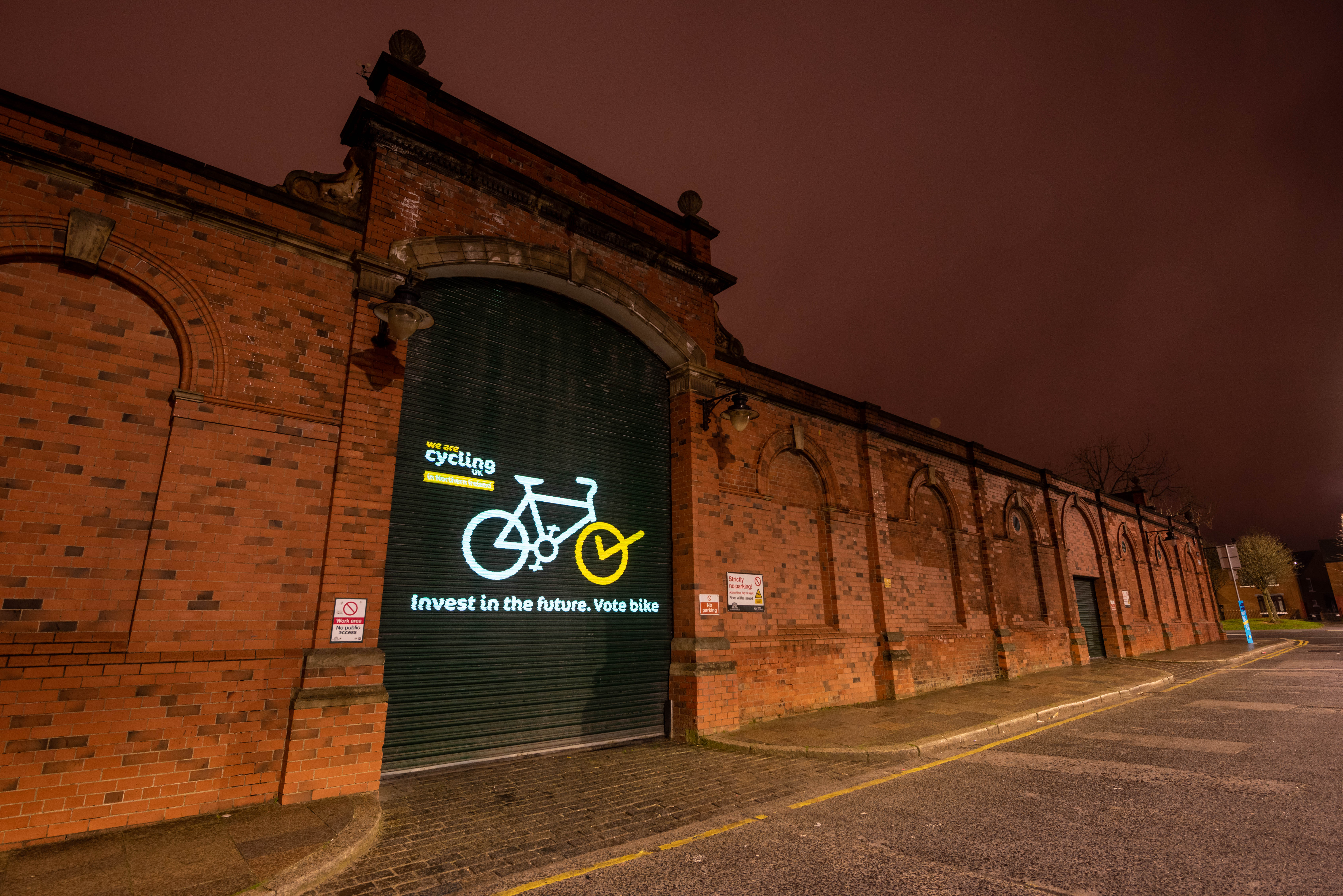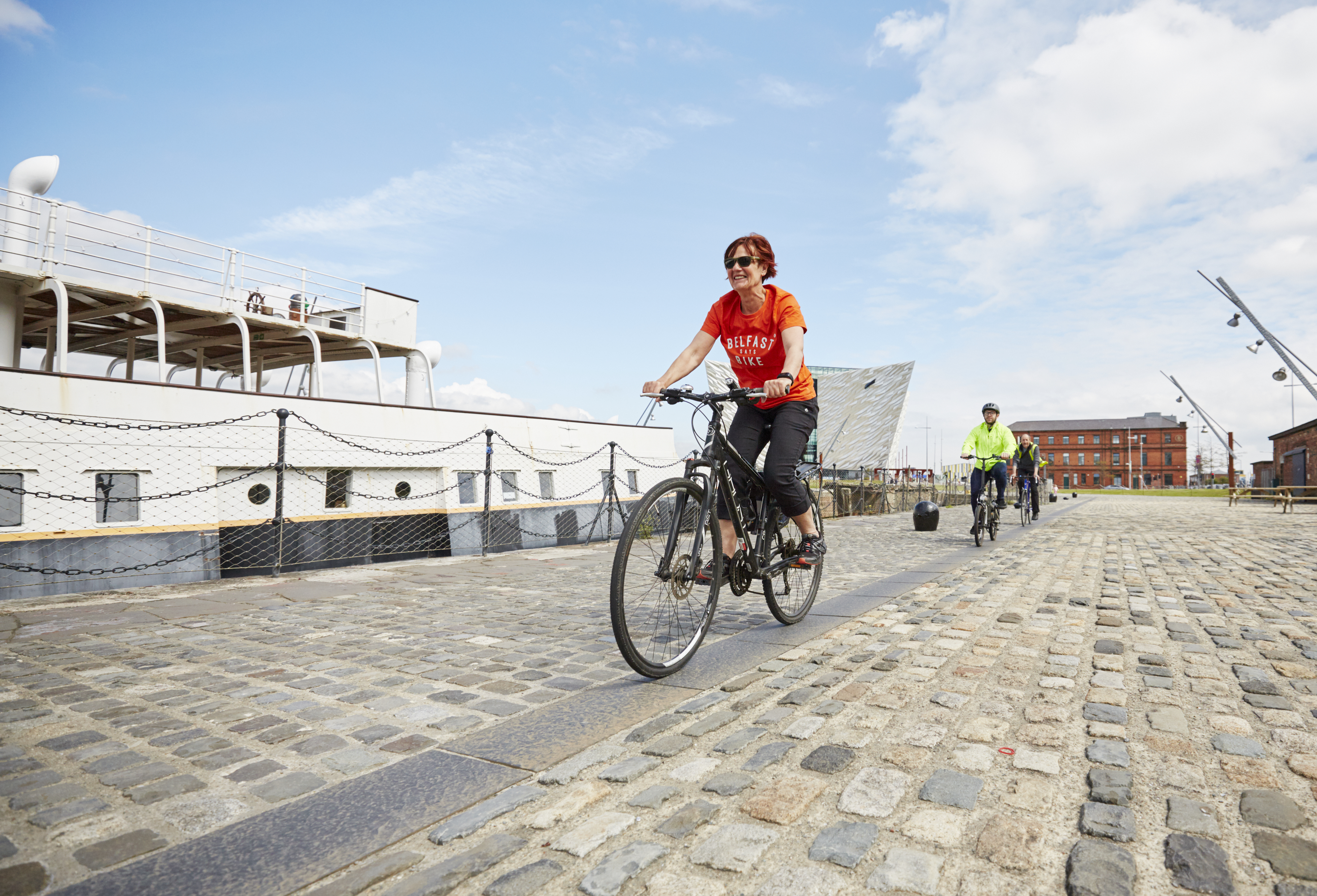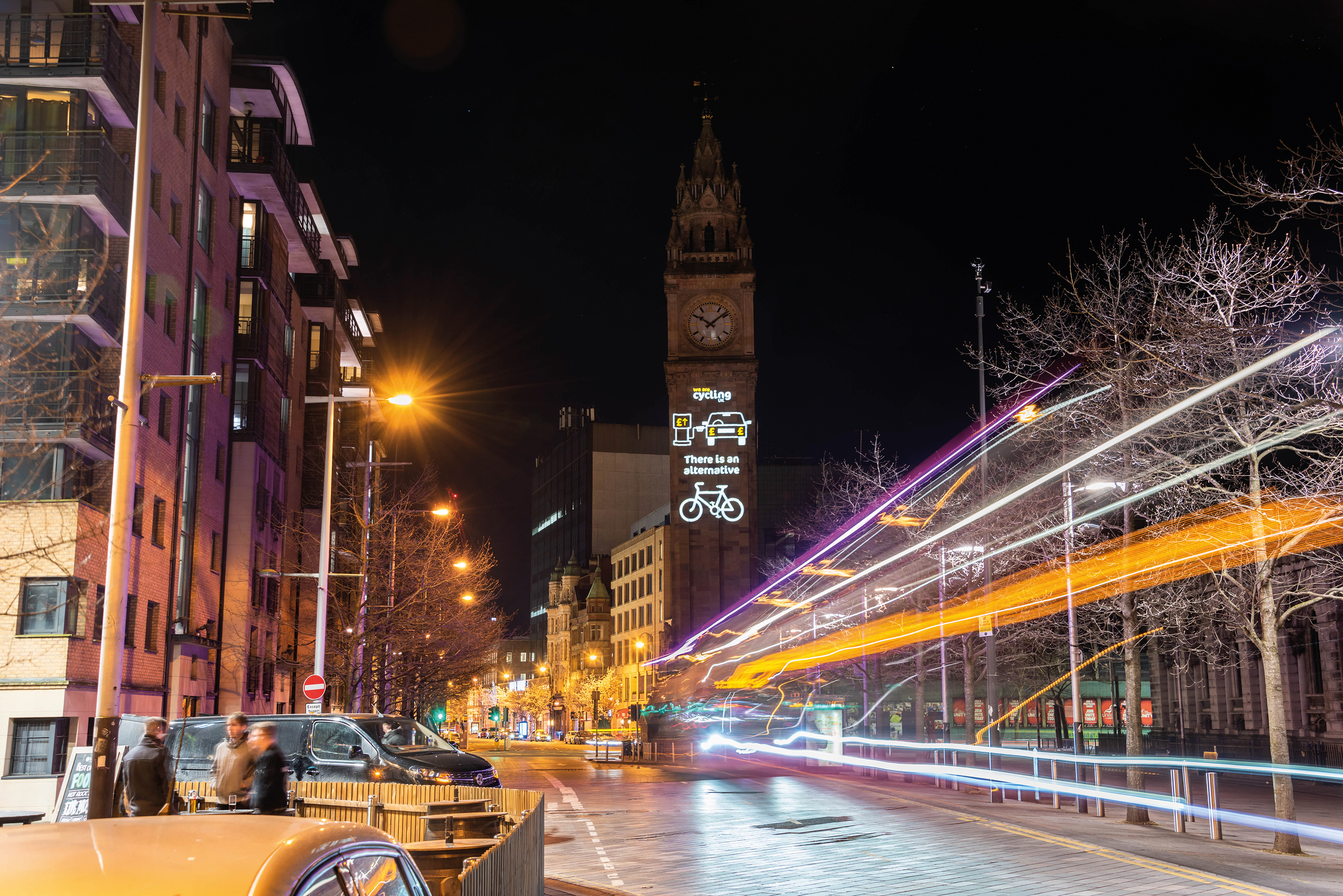Campaigning to stop motorists parking in cycle lanes in Northern Ireland
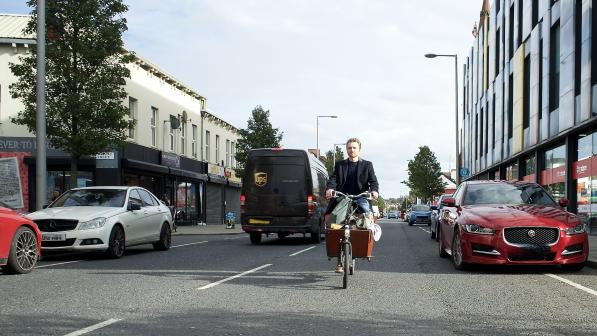
Keeping cars out of designated cycle spaces should, in theory, be straight forward. There are, however, quite a variety of reasons for the plague of cycle lanes being used as car parks across Belfast. This phenomenon seems to stem from an historic lack of legislation and enforcement, which has created a culture where we cannot even protect what little there is to keep us safe.
There are a variety of ‘cycle paths’ in and around the city, all with varied uses, levels of protection and varied legislation protecting their use.
Let’s start with pop-up lanes, which it turns out could be the biggest barrier to a successful roll-out of safe, segregated cycle lanes.
‘Temporary’ Segregated Cycle Lanes
What are they?
These are the ‘trial’ cycle lanes being tested by DfI before they decide whether to make them permanent.
Examples
Dublin Road, which has recently been approved for permanent status, (though we haven’t been told when this will happen). Currently the cycle lane is separated from general traffic by flexible plastic bollards, many of which are now missing or damaged from people driving over them.
Positives
These trial lanes can be a good way to show businesses and the public the benefits of a cycle lane while not generating as big a backlash if they were installed as permanent features from the get-go.
Could be even better if:
Parking and driving in these was legislated against, that’s right, incredibly, parking in ‘pop-up cycle lanes’ is completely acceptable, a fact recently uncovered by cyclist Jamie Nugent, who contacted the DfI to ask for intervention on the consistent blockage of these lanes by parked cars. The department responded "the cycle lane in this area was put in as a trial and is not legislated for yet, meaning that it currently cannot be enforced by TA’s (Traffic Attendants)".
As Jamie notes ‘I often cycle that way to use the gym, the cycle lane is the safest way for me to do so, it’s almost always blocked by either bins or cars parking for free.’
Quite how this oversight happened is beyond us, but it does beg the question, what is the point of running a trial on the use of a pop-up cycle lane when cars can legally block the entire lane for the duration of the trial?
Permanent Segregated cycle lanes
Examples
Big Fish Cycle Lane
What are they?
Cycle lanes which have a physical barrier between the cycle lane and the general traffic lane, these barriers range from effective protection, i.e. metal bollards, a kerb, to less effective protection, i.e. planters or plastic bollards.
Positives
There is legislation to stop people parking on these and it is occasionally enforced. The lanes also do, generally, give good physical protection to cyclists.
Could be even better if:
Enforcement was more regular, and repeat offenders get higher punishments. The best thing that could be done is placing metal bollards or planters along the kerb which physically stop drivers from entering and parking in the lane.
If we look at the big fish cycle lane (or the big fish car park as some have dubbed it), there hasn’t been anywhere near enough enforcement of restrictions to deter drivers of cars and vans from parking there. To be sure they aren’t impacting motor traffic, the trend is for drivers to park with all four wheels on the cycle lane, ensuring there isn’t an inch of space left for people cycling.
Brian Shannon, founder of ‘Share our Cars Belfast’ is a regular user of these lanes and encounters drivers blocking them daily; "People are driving onto the pavement and opening their doors into the cyclists’ paths, it makes the cycle lanes far more dangerous. We are all about keeping the roads clear for drivers’ convenience, but when it comes to a cyclists’ physical danger, we seem to pay very little attention".
Why is the legislation important?
Considering the high likelihood that much of the Belfast Bicycle Network will be introduced as ‘Temporary Lanes’ to begin with, we really need to get legislation to protect these trials, to ignore this issue any longer would be negligent.
Who is responsible for legislation?
The Minister for Infrastructure is responsible for bringing forward legislation on parking restrictions, with the department conducting consultations and helping draft the legislation.
The absence of legislation is yet another example of incompetence, dither and delay from the Department for Infrastructure. The Department are still yet to publish, or even mention the outcomes from consultations on pavement parking, their road safety strategy and Fixed Penalty Notices for dangerous driving. All these consultations concluded more than seven months ago and, for the public who engaged, it seems they were a complete waste of time.
Who is responsible for enforcement?
Again, the bulk of the responsibility lies with the DfI, they employ NSL services to deploy parking attendants and instruct them on how to carry out enforcement.
The Police Service of Northern Ireland (PSNI) can enforce parking restrictions, but as a policy they generally don’t, unless something is causing an obstruction to motor traffic. The ‘Hierarchy of road users’ as treated by the PSNI seems to have people walking and cycling much lower down than people in motor vehicles.
A recent example of this is when a cyclist recently ‘blocked’ a road lane (there were still 3 lanes available) beside the Big Fish with his bike, protesting drivers parking on the cycle path, and the police were there within three minutes, threatening him with prosecution if he didn’t move his bike, this was immediate and decisive action. The same police then failed to even speak to the drivers sitting in their cars completely blocking the cycle lane.
If the Chief Constable is prepared to instruct officers to intervene when motor traffic is impeded, then they should also be prepared to intervene when cycle lanes are blocked, people cycling are traffic too. The double standards are glaring, and if our intention is to get more people out of their cars and onto bikes, enforcement of existing legislation will play a major role.
These are real people with real lives, getting to work, dropping kids to school, running everyday errands, or just out for a leisure ride, all made dangerous by this lack of basic enforcement.
What are we asking for?
The set-up of power in Northern Ireland means there are only two bodies that can make a meaningful difference to dangerous parking, the DfI and the Chief Constable. We can argue that this is a cultural issue, but the most effective way of changing culture is to legislate and enforce.
The completely unique centralised power over roads infrastructure that DfI hold, if properly used, could be transformative for transport and travel across Northern Ireland, but if they don’t use it correctly there are very few, alternative legal channels for us to make a change.
In the short to medium term, we are calling for:
- Increased enforcement of mandatory cycle lanes, whether they are protected or just lines in the road.
- Enforcement of dangerous parking by the PSNI - we need to show that this parking is putting people in danger and use penalties to prevent it.
- The DfI to legislate to protect temporary cycle lanes from driving and parking, this needs to happen before the temporary lane on the Limestone/Cavehill road is put in place. Failure to do so would give campaigners against the cycle lane the opportunity to sabotage the trial, setting a precedent for future pop-up lanes.
- Legislation for parking restrictions on Advisory Cycle Lanes.
In the long term we are calling for:
- A commitment by DfI not to design and paint any further unprotected cycle lanes in Belfast or other towns/cities in Northern Ireland.
- All advisory and unsegregated cycle lanes to be upgraded to segregated lanes as per the department’s own guidelines.
We need to realise across the Assembly and Civil Service that the culture of driving was created and supported by successive decades of investment and legislation. We are not going to change that culture to walking, wheeling and cycling without the same levels of support.
Investment and legislation are within the remit and control of DfI - they are the sole body that can change this, we need to keep pushing and showing we are numerous, we are important, and we are the future of transport in our cities and towns.
Cycle Advocacy Network in Northern Ireland
Do you want to help get more people cycling? Do you want to share the joy of riding a bike? Do you want to see real change - with separated cycle lanes, safer roads, and shops, offices and homes accessible by bike? So do we!
The Cycle Advocacy Network (CAN) brings together people with a shared interest in creating the conditions that enable more people to cycle, including better infrastructure for cycling and safer roads.
The CAN resources, events and tools on this page are open to all, and there are specific ways to get involved listed below. If you'd like more detail, please read the Introduction to the Cycle Advocacy Network - and join us on the journey to get more people cycling.

